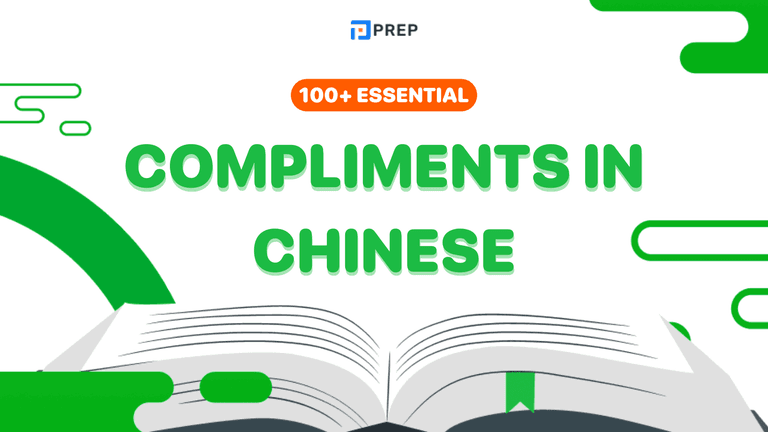Xin Nian Kuai Le (新年快乐): Meaning & How to Say Happy New Year in Chinese
The article "Xin Nian Kuai Le (新年快乐): Meaning & How to Say Happy New Year in Chinese" provides a comprehensive guide to understanding, pronouncing, and contextually using this important Chinese greeting. The central entity is "Xin Nian Kuai Le" itself, with the primary predicate being that it serves as the standard, universal Chinese expression for "Happy New Year" applicable in diverse contexts and regions.
This guide methodically explores the greeting from multiple angles: breaking down each component character's meaning, showing its written representation in both Simplified and Traditional Chinese, and detailing its precise pronunciation with careful attention to Mandarin's tonal system. It also compares "Xin Nian Kuai Le" with the alternative greeting "Gong Xi Fa Cai," explaining their complementary nature and different contextual uses.
- I. Understanding the Core Meaning of "Xin Nian Kuai Le"
- II. Visualizing the Greeting: Writing "Xin Nian Kuai Le" in Chinese Characters
- III. Sounding It Out: Pronunciation Guide for "Xin Nian Kuai Le"
- IV. Exploring Alternatives: Other Ways to Say Happy New Year in Chinese
- V. Refining Your Understanding: Answering Specific Greeting Nuances
- What's the core difference in meaning between Xin Nian Kuai Le and Gong Xi Fa Cai?
- How formal is Xin Nian Kuai Le compared to other Chinese New Year greetings?
- What other common wishes complement these main greetings during Chinese New Year?
- Is it culturally necessary to use multiple greetings beyond just Xin Nian Kuai Le?
- VI. Communicating with Confidence: Using "Xin Nian Kuai Le" Effectively
I. Understanding the Core Meaning of "Xin Nian Kuai Le"
"Xin Nian Kuai Le" translates directly to "Happy New Year" in English, making it the most common and straightforward Chinese greeting during New Year celebrations. This universally recognized phrase is widely used throughout Chinese-speaking communities worldwide, serving as the primary expression of new year wishes and celebratory sentiment during both Chinese New Year festivities and January 1st celebrations.
The meaning becomes even clearer when we break down the individual components of the phrase Xin Nian Kuai Le. The first character, Xīn (新), means "new" and represents freshness, beginnings, and the arrival of something novel. The second component, Nián (年), translates directly to "year" and forms the temporal foundation of the greeting. The final portion, Kuài Lè (快乐), combines to mean "happy" or "joyful," with Kuài suggesting quickness or pleasure and Lè representing joy or delight. Together, these characters form a complete wish for happiness throughout the coming year.
II. Visualizing the Greeting: Writing "Xin Nian Kuai Le" in Chinese Characters
Chinese has two primary character systems used across different regions, which affects how Xin Nian Kuai Le appears in written form. Understanding both versions helps you recognize and use the greeting appropriately depending on your audience.
Simplified Characters (简体字) display the greeting as 新年快乐. This version is predominantly used in Mainland China, Singapore, and Malaysia, representing the standardized, streamlined character set adopted in the mid-20th century to increase literacy rates. When writing or sharing new year greetings with people from these regions, this is the appropriate character set to use.
Traditional Characters (繁體字/正體字) represent the greeting as 新年快樂. These characters are primarily used in Taiwan, Hong Kong, Macau, and many overseas Chinese communities, preserving the historical forms of Chinese writing with greater visual complexity. The only difference in this phrase appears in the final character (樂 versus 乐).
While the visual representation differs between these two systems, the spoken phrase and meaning remain identical across all Chinese-speaking regions, allowing Xin Nian Kuai Le to serve as a universal greeting regardless of which character set is employed.
III. Sounding It Out: Pronunciation Guide for "Xin Nian Kuai Le"
Mastering the pronunciation of Xin Nian Kuai Le requires attention to Mandarin's tonal system, as incorrect tones can significantly alter meaning. The proper Hanyu Pinyin (the standard romanization system) with diacritical tone marks is Xīn Nián Kuài Lè. This precise representation guides proper pronunciation beyond just the consonants and vowels.
Each syllable in Xin Nian Kuai Le carries a specific tone that must be carefully produced:
-
Xīn is pronounced with Tone 1 (First Tone), marked with a horizontal line (ˉ) above the vowel. This tone requires maintaining a high, level pitch throughout the syllable, similar to holding a sustained musical note without any rise or fall. Think of it as the steady beep of a heart monitor - your voice should stay at the top of your comfortable range without wavering.
-
Nián takes Tone 2 (Second Tone), indicated by a rising mark (ˊ) above the vowel. This tone begins at a medium pitch and rises smoothly to a high pitch, creating an upward trajectory similar to the intonation English speakers use when asking a question like "What?" with surprise or curiosity. Your voice should start at about mid-range and clearly rise to nearly the same height as the first tone.
-
Kuài carries Tone 4 (Fourth Tone), shown with a falling mark (ˋ). This tone starts high in your vocal range and falls sharply to a low pitch, creating a decisive, commanding sound. It resembles the tone English speakers might use when giving a firm command like "Stop!" The sound drops quickly and decisively, like chopping downward with your voice.
-
Lè also uses Tone 4 (Fourth Tone), with the same falling mark (ˋ) and similar pronunciation characteristics as Kuài. The back-to-back fourth tones create a rhythmic pattern that gives the greeting its distinctive cadence.
For accurate Xin Nian Kuai Le pronunciation, practice each syllable separately before combining them. Focus particularly on maintaining the high level of the first tone, ensuring a clear rise in the second tone, and executing decisive falls in both fourth tones. Common mistakes include not keeping the first tone high enough, not rising sufficiently in the second tone, or not beginning the fourth tone from a high enough starting point.
IV. Exploring Alternatives: Other Ways to Say Happy New Year in Chinese
-
While Xin Nian Kuai Le serves as the standard greeting for New Year celebrations, other expressions are also extremely popular, particularly during Chinese New Year (Spring Festival), adding richness to your holiday vocabulary.
-
Gong Xi Fa Cai stands as the most prominent alternative greeting, written as 恭喜发财 in Simplified Chinese and 恭喜發財 in Traditional Chinese, with the Pinyin pronunciation Gōng Xǐ Fā Cái. Unlike the general happiness wish of Xin Nian Kuai Le, this phrase specifically means "Congratulations and wish you prosperity" or "May you be prosperous," focusing distinctly on wealth and good fortune in the coming year.
-
This greeting has particularly strong associations with Chinese New Year celebrations, often exchanged alongside the giving and receiving of red envelopes (hóngbāo) containing money. It's especially common in business contexts and situations where wishing for material success feels appropriate. The focus on prosperity reflects traditional values around family security and success.
Comparing these two primary greetings reveals their complementary nature:
-
Xin Nian Kuai Le functions as a general wish for happiness and joy, applicable to both Chinese New Year and January 1st celebrations without specific reference to material success. Its broader emotional scope makes it appropriate in virtually all contexts and relationships.
-
Gong Xi Fa Cai specifically wishes for prosperity and wealth, making it almost exclusively used during Chinese New Year rather than January 1st celebrations. Its focus on material success carries cultural connotations tied specifically to the lunar calendar celebrations.
Importantly, these phrases aren't mutually exclusive; they're frequently used together or in sequence during Chinese New Year conversations, creating a comprehensive wish for both happiness and prosperity in the coming year.
V. Refining Your Understanding: Answering Specific Greeting Nuances
As you incorporate Chinese New Year greetings into your communication, several nuanced questions may arise about their appropriate usage and cultural implications.
-
What's the core difference in meaning between Xin Nian Kuai Le and Gong Xi Fa Cai?
Xin Nian Kuai Le focuses on general happiness, well-being, and emotional joy for the new year ahead. It wishes the recipient a broadly positive experience without specifying the nature of that happiness. Gong Xi Fa Cai, however, centers specifically on material prosperity, financial success, and good fortune. The distinction lies between wishing someone emotional well-being versus economic advancement, though both are considered positive and appropriate wishes.
-
How formal is Xin Nian Kuai Le compared to other Chinese New Year greetings?
Xin Nian Kuai Le maintains standard, neutral formality suitable for almost everyone from close friends to respected elders and business associates. While more formal written greetings exist for very official communications, and more colloquial regional variants might be used among close friends, Xin Nian Kuai Le represents the most universally understood and culturally safe option for all relationships and contexts, especially for non-native speakers.
-
What other common wishes complement these main greetings during Chinese New Year?
Other common Chinese New Year wishes typically fall into three main categories, each addressing different aspects of well-being:
- Health wishes include expressions like 身体健康 (Shēntǐ jiànkāng - Good health), prioritizing physical well-being as a foundation for all other success.
- Success wishes focus on work or study achievements, such as 工作顺利 (Gōngzuò shùnlì - Smooth work) or 学习进步 (Xuéxí jìnbù - Progress in studies), recognizing professional and educational advancement.
- Family/Harmony wishes like 阖家欢乐 (Hé jiā huānlè - Joy for the whole family) emphasize collective happiness and harmonious relationships within the family unit.
-
Is it culturally necessary to use multiple greetings beyond just Xin Nian Kuai Le?
For non-native speakers, simply saying Xin Nian Kuai Le is generally considered polite and appreciated without further elaboration. However, adding Gong Xi Fa Cai or other relevant greetings, particularly when receiving red envelopes or visiting homes during Chinese New Year, demonstrates greater cultural awareness and personal warmth. While omitting additional greetings isn't typically viewed as insensitive, including them enhances the connection and shows respect for cultural traditions, especially in more formal or traditional settings.
VI. Communicating with Confidence: Using "Xin Nian Kuai Le" Effectively
Xin Nian Kuai Le (新年快乐/新年快樂) serves as the fundamental "Happy New Year" greeting in Chinese, appropriate for both Chinese New Year festivities and January 1st celebrations across Chinese-speaking communities. With the proper pronunciation (Xīn Nián Kuài Lè), attentive to each syllable's distinct tone, you can confidently express new year wishes in a culturally appropriate manner that will be understood and appreciated by native speakers.
As you incorporate this greeting into your communications, remember that language serves as a bridge between cultures. Your effort to learn and properly use Xin Nian Kuai Le demonstrates respect and interest in Chinese traditions while creating meaningful connections with Chinese speakers during important celebrations. Whether you're participating in elaborate Chinese New Year festivities or simply acknowledging the calendar year change, this versatile greeting opens doors to cultural exchange and shared celebration of new beginnings.

Hi I'm Chloe, and I am currently serving as an Product Content Administrator at Prep Education. With over five years of experience in independent online IELTS study and exam preparation, I am confident in my ability to support learners in achieving their highest possible scores.
Comment
Premium content
View allPersonalized roadmap
Most read












